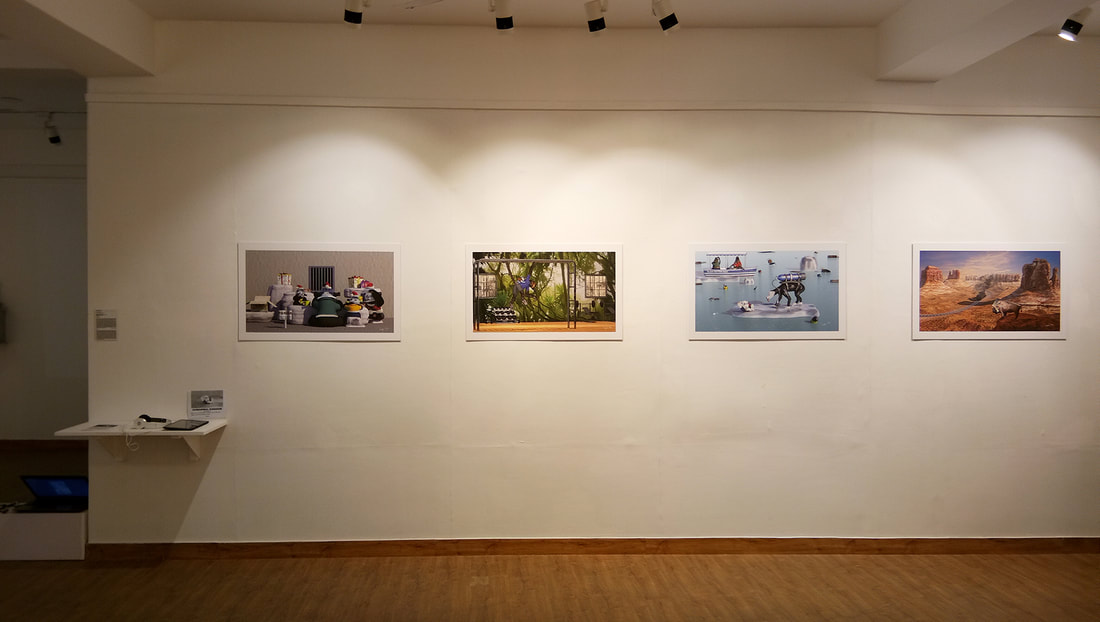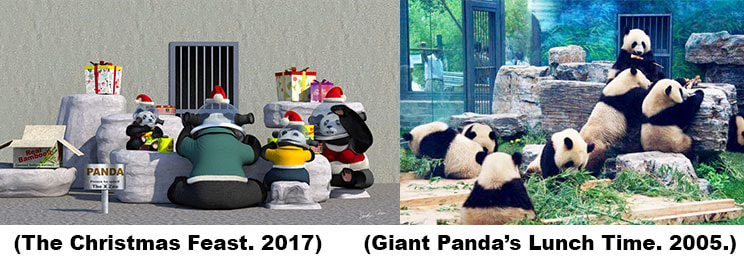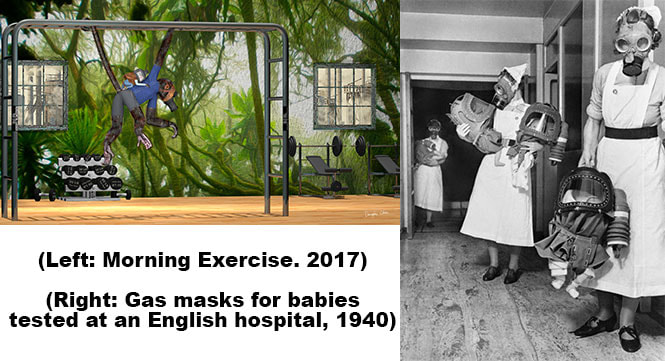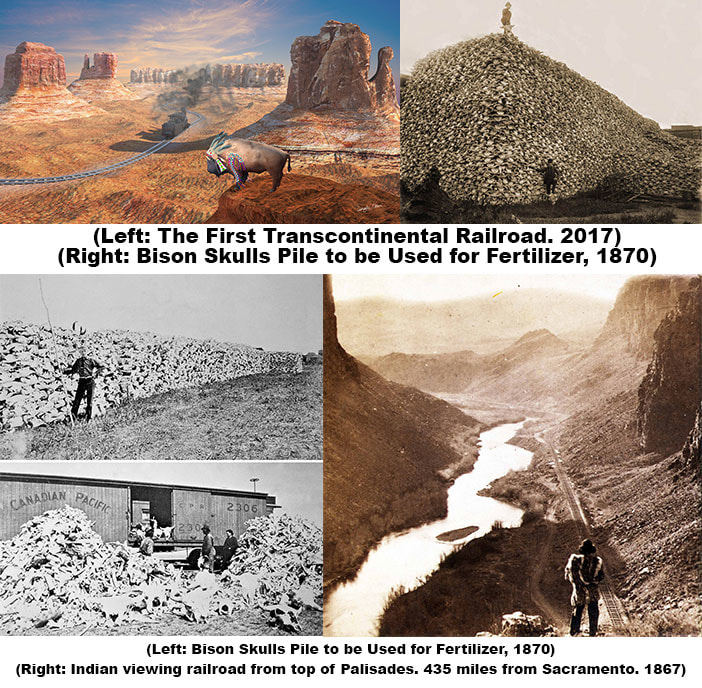|
Humanimal Kingdom
Illustrations and Augmented Reality 2017-2018 |
Worldwide construction and expansion have dramatically altered the landscape and changed the native species' way of life. Dense smog is occurring in cities across the world, causing respiratory diseases and death. Masks invented for protection from poison gas in World War 1 and dangerous levels of air pollution are growing in use. With narrations created from the animals' point of view, Humanimal Kingdom is an augmented reality installation depicting the environmental impact of our civilized world, its consequences and by-products.
(Photo of Humanimal Kingdom in exhibition at Art Konsult in New Delhi, India)
Humanimal Kingdom was exhibited at the following art venues:
• Building Bridge Online Exhibition. Emergent Art Space, CA. January 2018
• Building Bridge. International Digital & New Media Art Exhibition. Art Multi-Disciplines, Kolkata, India. Jan. 10 - 21, 2018
• Building Bridge. International Digital & New Media Art Exhibition. Art Konsult, New Delhi, India. Feb. 2 - 12, 2018
• Building Bridge. International Digital & New Media Art Exhibition. Gallery Sumukha, Bangalore, India. Mar. 17 - 28, 2018
• Climate Change Juried Exhibition. Art Reach of Mid-Michigan, Mount Pleasant, MI. April 4 - 28, 2018 (Honorable Mention Award)
• Dengke Chen Solo Exhibition – Humanimal Kingdom. North Charleston City Gallery, Cultural Arts Department, North Charleston, SC. Sep. 6- 28, 2018
• Dengke Chen, Goran Fazil, and Aaron Oldenburg: In Play, Flow, and Ritual. King Street Gallery, Montgomery College, Takoma Park, MD. Sep. 17 - Oct. 12, 2018
• ‘CITY UNSEEN’. Snap! Space, Orlando, FL. Nov. 02, 2018-Jan. 12, 2019
• Building Bridge Yangon. The Old Tourist Burma Building Museum, Yangon, Myanmar. July. 17 - 30, 2019
• Dengke Chen Solo Exhibition - Reframing Imagery. The Fine Arts Gallery, the College of Southern Nevada, North Las Vegas, NV. Nov. 2 - Dec. 7, 2019
• [create]ures: Animals in Contemporary Art. Spartanburg Art Museum, Spartanburg, SC. Nov. 21, 2019 - Feb. 9, 2020
• Building Bridge Online Exhibition. Emergent Art Space, CA. January 2018
• Building Bridge. International Digital & New Media Art Exhibition. Art Multi-Disciplines, Kolkata, India. Jan. 10 - 21, 2018
• Building Bridge. International Digital & New Media Art Exhibition. Art Konsult, New Delhi, India. Feb. 2 - 12, 2018
• Building Bridge. International Digital & New Media Art Exhibition. Gallery Sumukha, Bangalore, India. Mar. 17 - 28, 2018
• Climate Change Juried Exhibition. Art Reach of Mid-Michigan, Mount Pleasant, MI. April 4 - 28, 2018 (Honorable Mention Award)
• Dengke Chen Solo Exhibition – Humanimal Kingdom. North Charleston City Gallery, Cultural Arts Department, North Charleston, SC. Sep. 6- 28, 2018
• Dengke Chen, Goran Fazil, and Aaron Oldenburg: In Play, Flow, and Ritual. King Street Gallery, Montgomery College, Takoma Park, MD. Sep. 17 - Oct. 12, 2018
• ‘CITY UNSEEN’. Snap! Space, Orlando, FL. Nov. 02, 2018-Jan. 12, 2019
• Building Bridge Yangon. The Old Tourist Burma Building Museum, Yangon, Myanmar. July. 17 - 30, 2019
• Dengke Chen Solo Exhibition - Reframing Imagery. The Fine Arts Gallery, the College of Southern Nevada, North Las Vegas, NV. Nov. 2 - Dec. 7, 2019
• [create]ures: Animals in Contemporary Art. Spartanburg Art Museum, Spartanburg, SC. Nov. 21, 2019 - Feb. 9, 2020
Humanimal Kingdom - list of illustrations and animations
The Christmas Feast, 2017-18
Morning Exercise, 2017-18
A Hunt, 2017-18
The First Transcontinental Railroad, 2017-18
The Christmas Feast, 2017-18
Morning Exercise, 2017-18
A Hunt, 2017-18
The First Transcontinental Railroad, 2017-18





